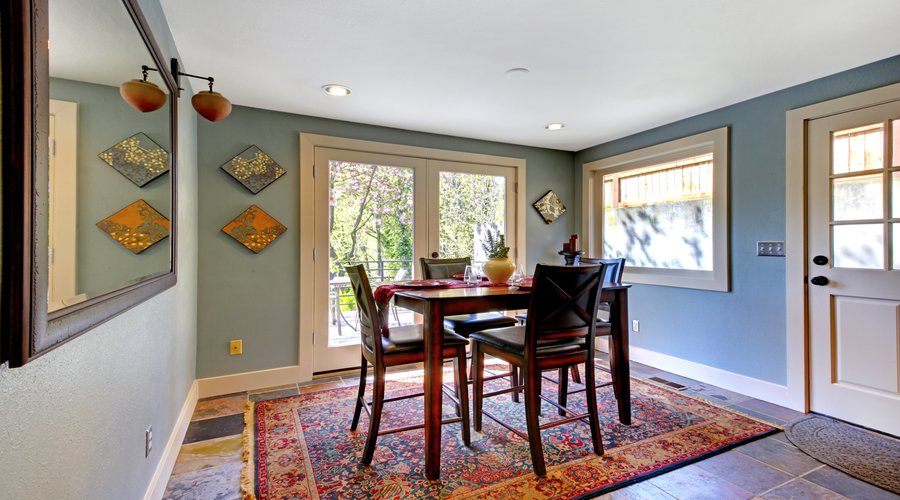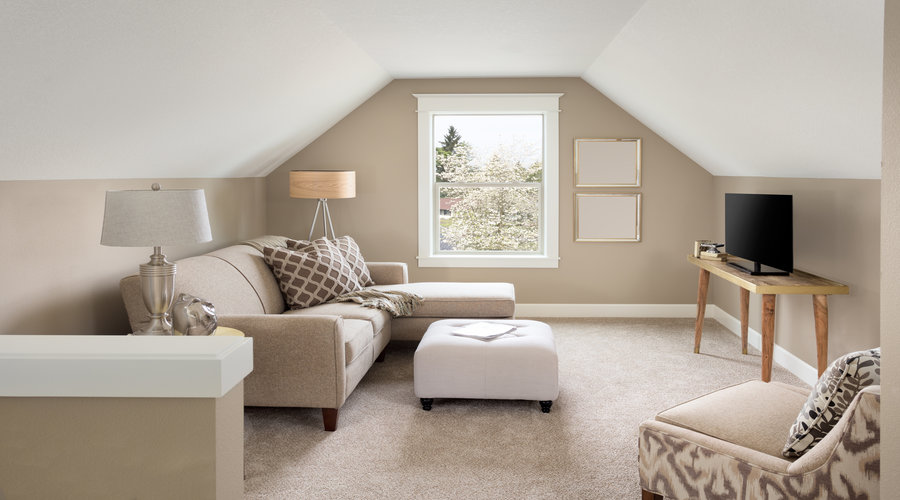How To Use Paint To Alter A Room's Size Or Shape

Choosing a colour palette for your home is extremely important when it comes to creating an overall mood and atmosphere. Your paint choice is part of the reason why a room can feel comfortable and homely, as opposed to feeling cold or overwhelming.
Interestingly enough when it comes to picking a particular pallet, it's not just emotions that are affected, as colours can often attribute to a room's size, and shape.
Below we've shared our top tips when it comes to interior painting and which colours you should consider for your space.
Ideal shades for smaller rooms
A common question often asked by homeowners is how to make the most of their space, especially when it comes to making smaller rooms appear larger. Generally, cool, light tones and shades are the way to go, not only because they make the best use of any natural light that enters the room, but because they have a ‘receding’ quality that visually opens the room up.
Another thing to consider when it comes to decorating smaller rooms is, to avoid using contrasting colours, as sticking to one shade makes it difficult for the eyes to recognise the room's edges, creating the illusion of a larger space.
Make an extra-large room feel cosy
Spacious living rooms often run the risk of feeling empty and bare and can sometimes lead to clumsy and cluttered décor.
To avoid this issue, we'd recommend using darker shades to create a more inviting atmosphere. Darker paint colours work to absorb light and is perfect for rooms that may need a hand feeling homely. Warm colours like red, yellow and orange will make your cavernous living areas feel cozier. If you go beyond paint, use textured wallpapers, specially those in earthy hues can add an extra layer of warmth.
Dealing with the low ceilings

High ceilings are generally preferred; in fact, studies have shown that rooms with a higher ceiling can help make us think in a more open-minded way. Ultimately, more space is generally a good thing as people don’t like to be confined. You can make a low ceiling seem higher by using the same bright colours on the walls and ceiling. As mentioned earlier, this has the optical effect of blurring the line somewhat between where the wall ends, and the ceiling begins.
Even you can try decorating the walls with vertical stripes, choose between using wallpapers or painting. If it suits the aesthetic of your room, you can also have a mirror on the ceiling.
Partition a long room
There’s no doubt that large, long rooms can be problematic, particularly when their main use is for entertaining. A feasible way of dealing with this is to separate the room in some way. Make sure of folding screens, bookcases or other shelving to block off a specific area. Picking out the right colours can also help.
Using warm shades and darker colours on the most remote and end wall
can have an effect of making it seem much closer, specially if the
adjacent walls (the longer walls) are painted in lighter colours.
Transform your hallways
No matter the hallway, the right choice in paint can significantly improve its shortcomings.
- For example, if you do want to lengthen your hallway, we'd suggest painting the side walls light and using a complementary colour on the end wall to avoid the "dead-end" effect.
- To shorten hallways, you're looking to draw attention to your back wall and stop visual focus for spanning across the length of the hall. To achieve this, you'll need to paint the wall with a bold contrasting colour to the rest of your walls.
- Lastly, to widen up narrow hallways, stick to white and other light neutrals to help create the illusion of space, avoiding warm and darker shades that will shrink your hall.
Fix the boxy rooms

When working with square or boxy rooms, you mostly need to rethink some of your interior design ideas. Give your room a visual camouflage by painting the ceiling with pale blue shade. It gives a sky like vibe and lifts the ceiling up a bit. Choose a monochromatic colour tone and rich accents to make your boxy rooms feel rich.
Wall moulding can be a great addition, not so expensive, yet adds a lot of charm. To create the illusion of spaciousness, paint walls and ceiling with the same shade of colours, so the visual focal point won’t stop at the ceiling line.
Transform the featureless rooms
While some rooms suffer from having too many focus points, a room with no feature or centre can often appear drab or lifeless. To fix this, make time to plan out where the centre of your room will be.
After you've decided, use bright and high contrasting colours to crave out that particular part of the room. You can try a range of different techniques, including colour blocking, to draw attention to the area.
To colour block, you'll want to use colours on the opposite sides to create vivid and exciting spaces. For a more subtle effect, you can also consider trying out faux finishes, for a more subdued look.
Hide architectural features
Painting your home is not just about adding beauty to a space. In some cases, you can use paint for keeping the architectural eyesores away from the view. Redecorating and repainting can lessen the visibility of faults and other unpleasant areas in your home.
Use the same colour and paint finish for concealing those oddly looking vents, pipes, wires and electric plates. Try to avoid using anything attention-grabbing as high colour contrast or decorative finish. Monochrome is the perfect colour combination when you are trying to downplay any surface to conceal that architectural feature.
By keeping everything in a uniform colour, your eye is less likely to catch on these areas, leaving you with a clean base to continue with your decorating.










